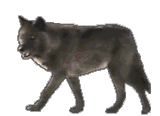|
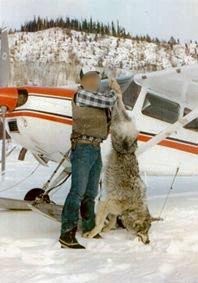
Are these the kind of sport hunters we want roaming through our forest those that are to chicken to show there faces

Are wolf pups also to be targeted by aerial gunning
Enter content here
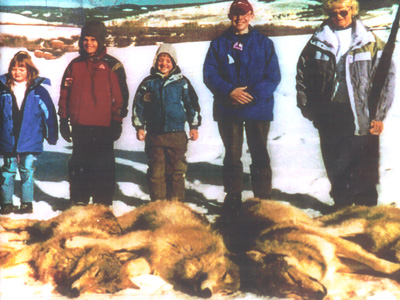
I have no words that can explain this picture except for total shock!

If we stop Alaskan wolves from being killed we save our wolves from the same fate
Dear JACK,
Its simply outrageous. Alaska Governor Sarah Palin has signed off on a $400,000 state-funded propaganda campaign to justify
the states barbaric wolf slaughter from the skies.
Why? Because Governor Palin and her political cronies in the state legislature are afraid that Alaskans will vote to end
the brutal, unfair and unnecessary aerial gunning program.
Just as we are making progress on a long-term solution at the federal level, the state of Alaska has opened a new front
in the battle over aerial gunning of wolves.
Governor Palin will be using the states coffers for a major public relations effort that will include an expensive media
and outreach campaign to distort the facts and demonize wolves -- all on the taxpayers dime.
. We can't let their lies go unchallenged. We need your help to start mobilizing activists NOW to counter this state-funded
propaganda machine.
The Palin Administration will stop at nothing to continue Alaskas wolf slaughter. She wanted to pay $150 bounties to shooters
who turned in dismembered legs of wolves. Her Board of Game wanted to intensify aerial gunning by using helicopters as well
as fixed-wing aircraft.
Now, as Alaskas voters are less than a year away from a vote to restrict deadly aerial gunning, she's using state funds
for a misinformation campaign to continue the slaughter.
The good news is that we know we can stop her. With the support of people like you, Defenders and our partners have already
been able to:
* Secure a place on the ballot for a measure to stop Alaskas barbaric aerial gunning programs -- helping to mobilize
more than 56,000 Alaskans to put the issue to a vote.
* Prevent the state from using bounties and helicopters to kill more wolves.
* Advance legislation in the U.S. Congress to stop Alaskas wolf slaughter from the skies -- and prevent programs like
it from spreading elsewhere.
* Fight in state court to stop another deadly season of aerial gunning.
With this latest move, Governor Palin and her anti-wolf allies in the state legislature have dropped an outrageous gauntlet
my personal opion all governers and wild life game and fish should be held accountable for ther persicution of wolve and
other wild life.
Help Stop the Bush Administration's Latest Debacle: Aerial Gunning of Greater Yellowstone Wolves
July 25, 2007 | view comments (42) | add yours
In 1995, Canada sent 35 gray wolves to the state of Idaho, to help reintroduce wolves to the Yellowstone region of the
Norwest United States. Protected under the Endangered Species Act, free-living wolves flourished in the Yellowstone area of
the Northern Rockies in Idaho, Wyoming, and Montana. Gray wolves play a beneficial role in the ecosystem, and they also help
to maintain healthy populations of raptors, rodents, and coyotes and other animals.
Now the Bush administration's U.S. Fish and Wildlife Service has cleared the way for states to begin aerial gunning these
reintroduced wolf families as early as this fall. This disgraceful scheme, supported by a coalition of hunters and ranchers,
aims to kill up to 700 wolves, which will decimate the current population of approximately 1,200. Wolves would be removed
from the list of federally protected, threatened and endangered species, but the aircraft-assisted killing would begin while
they are still on the list. Wolves could be shot on sight in most parts of the states, if they travel outside the safety of
Yellowstone or Grand Tetons National Park.
Hasn't Bush or the officials in these three states learned anything from shameful wolf control programs in Alaska? When
the Alaska Board of Game and Department of Fish and Game moved to deploy, as The New York Times editorialized on March 14,
2004, an air force to hunt animals as a method of suppressing wolf populations to make moose hunting more convenient, there
were audible protests around the world, and a successful travel boycott of Alaska, launched by Friends of Animals. Why do
Idaho, Wyoming, and Montana officials want to step into the same firestorm of criticism by signifying their return to wrongheaded
wolf persecution routines?
Following Alaska down the slippery slope of a primitive, violent, wolf slaughter scheme, federal and state officials also
failed to justify their machinations with good science. The purported goal is to protect elk populations, yet there is no
clear evidence of any decline in elk. Moreover, elk are coveted by hunters.
For example, in Idaho, elk populations are 20 percent above so-called management objectives, according to Idaho Fish and
Game's 2006 progress report, which stated, Overall elk populations statewide are near all time highs. Yet this same agency
based the plan for the aerial gunning of wolves on a trend count in the Clearwater region, relying on astonishingly unscientific
data in which eight cows were reportedly killed by wolves in the area.
This example of politics trumping science is also based on the faulty reasoning that wolves can be killed in large numbers
with no biological problem, simply because their high reproductive rates and dispersal capabilities enable them to restore
their populations quickly. These views are without sensitivity to shattering the lives of individual animals, or the damage
it does to destroy members of a socially cohesive group.
Ranchers and hunters have spearheaded the campaign for this wolf-killing scheme, led by Idaho's Ron Gillett, of the Idaho
Anti-Wolf Coalition. Using a dead wolf as their mascot, Gillett's group distributes Kill a Wolf bumper stickers and describes
the animals as land piranhas.” At one of their rallies earlier this year at the Idaho Capitol, Governor C.L. Butch
Otter endorsed their efforts, promising that the state would kill more than 500 wolves after delisting. Added Otter, I'm going
to bid for the first ticket to shoot a wolf. The Idaho legislature then voted to allow permits to kill wolves for only $9.75.
The U.S. Fish and Wildlife Service is accepting public comments on their wolf control scheme plan until Monday, August
6, 2007. Priscilla Feral, president of Friends of Animals advises, The Draconian wolf-control measures these states are proposing
are best left for snow removal.
Please write to oppose the wolf control schemes. Ask the U.S. Fish & Wildlife Service to prevent states from initiating
aerial shooting schemes - out of respect for the inherent value of the wolves, and in the interest of a thriving biocommunity
in which theenvironment is protected and wolves remain free.
Ed Bangs, Western Gray Wolf Recovery Coordinator
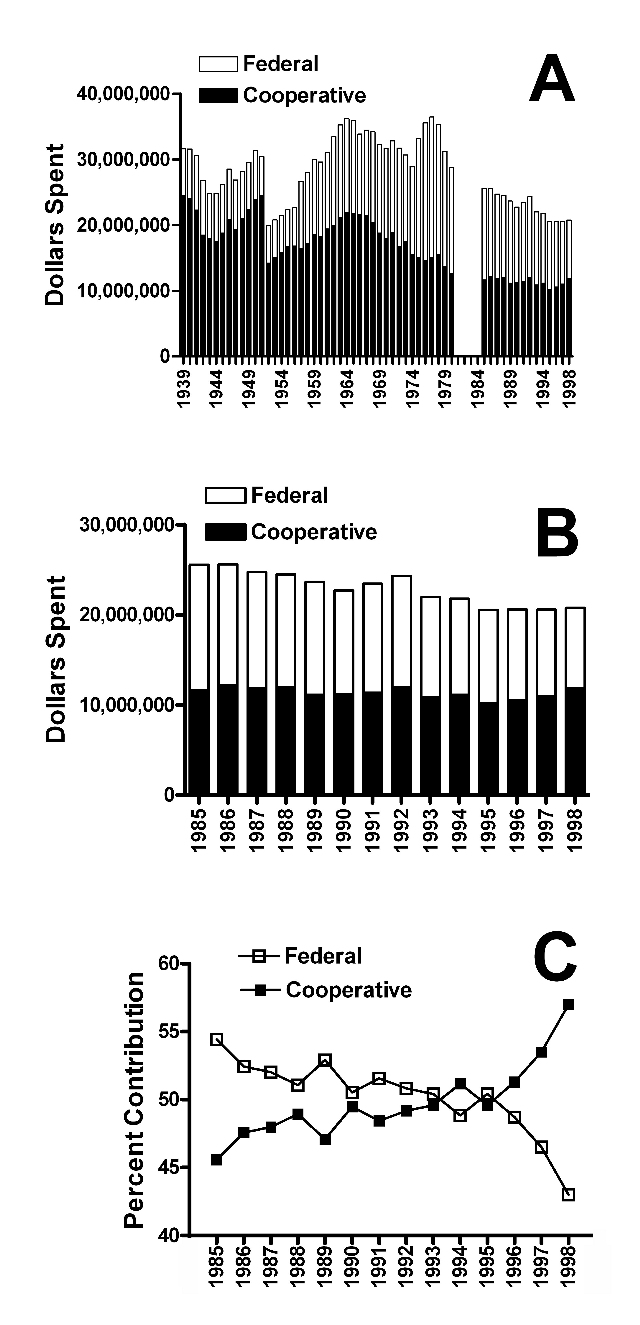
|
| view the government cost to the tax payers for airial gunning |
May 11, 2006
Contact(s) Cindy Hoffman, (202) 772-3255 William Lutz, (202) 772-0269
Alaska Board of Game Set to Expand the Aerial Gunning of Wolves and other Predator Control Measures
Anchorage, AK - The Alaska Board of Game is set to once again expand Alaskas aerial gunning wolf control programs, despite
overwhelming public opposition to aerial gunning by members of the public. The proposed changes could reduce wolf populations
to less than ten percent of their original numbers over an area the size of Wyoming.
The Alaska Board of Game continues to expand these senseless programs, even when adequate data is absent to justify them.
This fails to conform to sound wildlife management practices, said Valerie Brown, a spokesperson for Defenders of Wildlife.
Aerial gunning uses small low flying aircraft to chase wolves to exhaustion and then land and shoot them or shoot them
from the air. In the three years since Alaska has begun issuing permits to pilots and gunners to conduct aerial-based wolf
control more than 550 wolves have been killed. This year alone, more than 150 wolves were killed.
This is not an issue of just a few wolves in a limited number of areas. The Alaska Board of Game wants to eliminate over
80 percent of the estimated wolf population across large portions of the state so hunters from urban areas and outside the
state can have more moose and caribou to hunt, said Brown. The Board is ignoring the fact that a majority of Alaskans oppose
aerial gunning absent a biological emergency and is instead catering to the desires of a minority of hunters.
The Anchorage Board of Game meeting is a continuation of the March annual spring meeting, so that predator control proposals
that were not finalized can be reviewed and voted on.
Other proposals the board will consider include:
Classifying brown and black bears as furbearers, allowing them to be trapped and their fur sold;
Allowing same day airborne hunting and the harvest of females and young bears;
Extending the grizzly bear hunting season through June 30th;
Implementing aerial gunning and predator killing plans for GMUs 14B, 16A, 19B, 25D and specific caribou herds; Allowing
the use of snow machines to pursue wolves and bears;
Extending wolf hunting season to May 31
The board not only wants to expand the aerial gunning of wolves but now wants to move into the use of aircraft for controlling
brown and black bears. It is very disheartening to see the board so willing to sacrifice Alaskas natural heritage, said Brown.
The Board will meet May 12 - 14, at the Atwood Building, Conference Room #240, 550 West 7th, Anchorage. A draft agenda
and meeting materials can be found at the Alaska Board of Game website.
###
Defenders of Wildlife is recognized as one of the nation's most progressive advocates for wildlife and its habitat. With
more than 490,000 members and supporters, Defenders of Wildlife is an effective leader on endangered species issues.
|
 |
|
|
|
 |
|
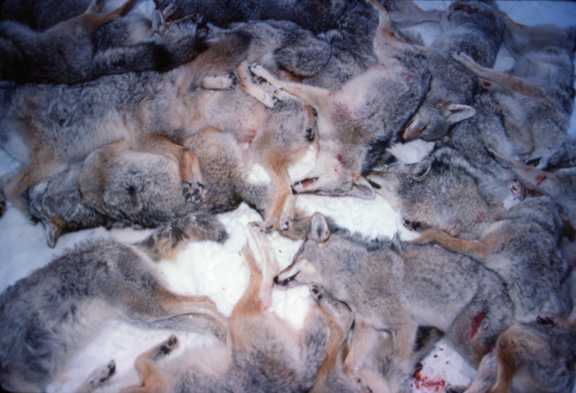
This is the results of aerial gunning is this how we treat our wild life.
And they have the nerve to call themselves sport hunters
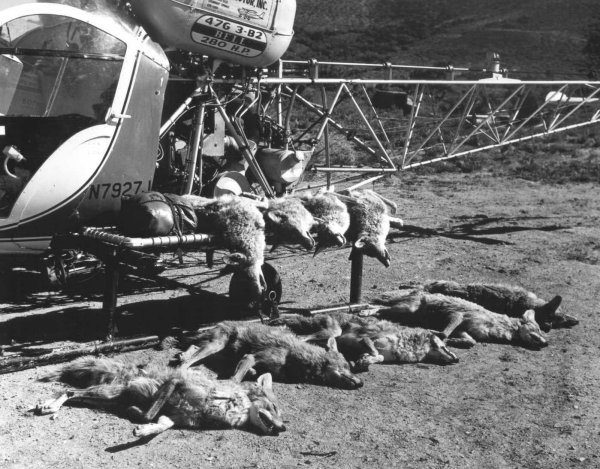
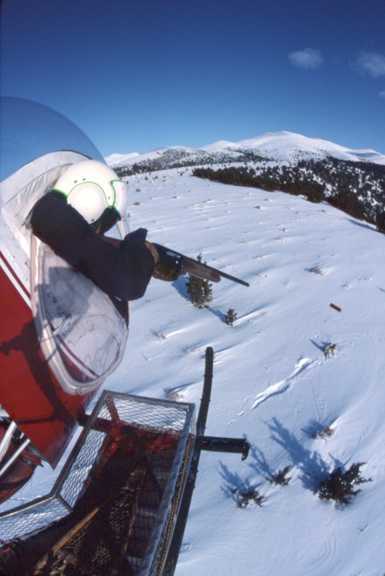
This is how its done does it look like there giving A wolf A fair chance.
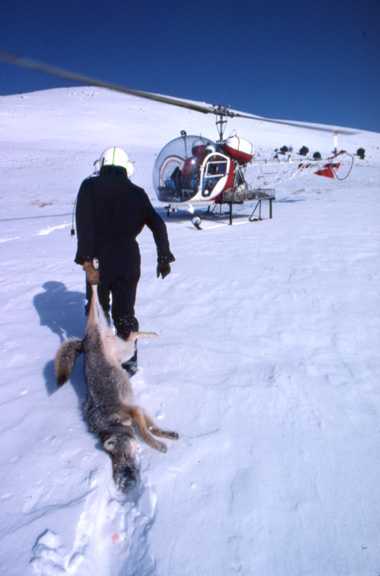
If I was A sport hunter I would be Ashamed to call this A trophy.This is not trophy hunting by any means.
Board of Game
Board of Game Meeting Calendar (as of May, 2007)
Meeting Date Topics Location Links to more information (*PDF)
Emergency Teleconference
August 9th, 2007
Unit 1D White Phase Black Bears
Teleconference Board of Game Teleconference on Unit 1D Bears
October, 2007
October 4, 2007
Unit 15 Small Game Hunting Regulations / Guide-Client Agreements in Units 8, 13 and 21
Comment Deadline:
September 28, 2007
Anchorage Proposals
Legal Notice
Agenda
Dept. Comments
Actions Taken
Fall, 2007
November 9-12, 2007
Arctic/Western Region
Proposal Deadline:
August 17, 2007
Comment Deadline:
October 26, 2007
Bethel
Proposals
Legal Notice
Agenda
Roadmap
Dept. Comments
Actions Taken
Statewide, 2008
January 25-28, 2008 Statewide Regulations
Cycle B
Proposal Deadline:
November 2 , 2007
Comment Deadline:
January 11, 2008 Anchorage
Proposals
Legal Notice
Agenda
Roadmap
Proposal 33: Dept. Overview (784 KB)
Dept. Comments
Actions Taken
Spring, 2008
February 29 - March 10, 2008
Interior Region
Proposal Deadline:
December 7, 2007
Comment Deadline:
February 15, 2008
Fairbanks
Proposals
Legal Notice
Agenda
Actions Taken
Subject to meeting space availability.
*tentative date
To view previous years' Board of Game Meeting Schedule and documents, see below:
* 2006/2007
* 2005/2006
* 2004/2005
* 2003/2004
* 2002/2003
Comments may be mailed or faxed to the following location:
ALASKA DEPARTMENT OF FISH AND GAME
Boards Support Section
P.O. Box 115526
Juneau, AK 99811-5526
(907) 465-4110
(907) 465-6094 FAX
Well as I said bears would be there next target and it looks like its starting.These bear are also going to be targeted by
airial gunning as well as trapping.
Federal Government Sued Over Aerial Gunning of Wildlife
Animal Protection Institute
Tuesday, 6 March 2001
Coalition Demands Environmental and Economic Accountability
Washington, DC -- A lawsuit filed in federal court today seeks to stop the aerial gunning of wildlife until the US Department
of Agriculture's Wildlife Services program (WS) and the US Department of Interior's Bureau of Land Management (BLM) comply
with federal law. The suit was filed by AGRO: A Coalition to End the Aerial Gunning of Wildlife with help from the Western
Environmental Law Center in Taos, NM. AGRO is comprised of 10 environmental, animal protection, and citizen advocacy organizations.
"Wildlife Services and the BLM have violated federal law by failing to conduct adequate analyses that reflect the
true environmental and economic costs of their aerial gunning program," said Robin Cooley, the group's attorney. AGRO
seeks an injunction barring the aerial gunning of wildlife until the agencies bring the program into compliance.
Through its aerial gunning program, Wildlife Services uses low-flying aircraft to kill predators on public and private
lands throughout the western and midwestern United States. In 1999, Wildlife Services shot and killed 33,706 animals from
the air, primarily to benefit private ranchers. "This program, which costs taxpayers millions of dollars each year, promotes
welfare ranching. Livestock producers contribute little or nothing," said Camilla Fox, Wildlife Program Coordinator for
the Animal Protection Institute.
In addition, accidents are rampant. "Since 1989," noted Wendy Keekover-Ring of Sinapu, "WS has crashed
17 helicopters or airplanes while hunting predators, killing 7 people and injuring 21 others. Taxpayers are stuck with paying
for all investigations and monetary compensation due to these crashes."
The BLM has ultimate authority over its lands and cannot legally allow activities which fail to comply with all applicable
federal laws; yet, the BLM has failed to perform certain site specific and cumulative environmental assessments as required.
"Wildlife Services, aided by the BLM, operates its aerial gunning program under a veil of secrecy and has effectively
kept the public out of the planning process," said Fox. "Wildlife is supposed to be in the public trust yet few
Americans know that their tax dollars pay for the killing of countless wild animals under the guise of 'public service'. We
hope this lawsuit will focus public scrutiny on the outmoded, wasteful and shameful aerial gunning program. "
A Coalition To End Aerial Gunning of Wildlife
THE HIGH SOCIAL COSTS OF AERIAL GUNNING
Each year since 1939, the federal government and cooperators, which include counties, states, and industry groups, have
spent between $20.5 and $36 million on killing predators for the benefit of livestock growers. Peak spending came in the mid-1960s,
and then again in the late 1970s [Figure A]. In the past two decades, spending has diminished [Figure B], although the numbers
of animals killed has not.
In the decades between 1939 and 1997, Wildlife Services killed over 5 million predators for livestock protection. In 2004,
Wildlife Services killed an estimated 2.7 million animals, or about 1 animal every five seconds to protect farmers, ranchers,
and others. (In 2004, most deaths came from poison, and non-native starlings were the primary target.) In the past two decades,
appropriations from the U.S.D.A. went down, while spending from cooperators (other federal agencies, states, counties, or
industry groups) went up [Figure C].
Industry groups and taxpayers have funneled $1.6 billion dollars into predator-killing programs between 1939 and 1998,
according to a new study to be published in the journal of Conservation Biology (Berger, 2006). That investment did not benefit
sheep ranchers, the study found. Kim Murray Berger, Wildlife Conservation Society research scientist, writes, "that the
decline of the sheep industry has been associated most closely with unfavorable market conditions rather than predation losses
casts doubt on the value of continued carnivore control, except perhaps at a very local scale" (Berger, 2006). In other
words, based on 60 years of data, Berger found that lethal-predator controls did not shore up a sheep industry that has been
battered by unfavorable market conditions.
Aerial gunning of wildlife occurs in 17 Western and Midwestern states, on both public and private lands. Although the
Federal Airborne Hunting Act, 16 U.S.C.A. §742j(1), makes it illegal to "hunt, harass any animal, or shoot from the air,"
exceptions allow certain federal or state agents to conduct "research" or "to protect domestic livestock or
crops."
South Dakota and Wyoming fund their own predator-control programs. Private individuals with a valid state permit may aerial
gun in some states.
The Federal Government’s Aerial Gunning Program:
In 1931, Congress ordered the Secretary of Agriculture to find ways to "eradicate" wildlife considered a nuisance
to the agricultural industry, and made provisions to subsidize farmers and ranchers for this program (7 U.S.C. § 426). In
the early 1940s, the practice by the federal government to aerial gun wild native carnivores program gained a foothold.
Social Costs:
* According to one study by federal researchers, the cost of killing a coyote is between $185 and $805 per individual
(Wagner and Conover 1999). The overhead includes maintaining a fleet of aircraft, wages and other employee compensations,
and fuel and ammunition costs -- for starters.
* The real costs of the program remain hidden, however. Wildlife Services refuses to fulfill our numerous Freedom
of Information Act Requests concerning their aerial-gunning budget. When Congressman Mark Udall (D-CO) intervened on our behalf,
Wildlife Services still failed to give us documentation relating to the costs of their wildlife-killing program.
* Since 1989, Wildlife Services has experienced several aircraft crashes, resulting in numerous injuries or fatalities
to federal agents (details here). Obviously, flying close to the ground while chasing coyotes, foxes, or wolves can lead to
trouble, such as flying into powerlines, trees, or land formations. Flying low leaves little maneuvering room when pilots
experience unexpected gusts of wind.
* In 2004, the USDA Office of Inspector General (OIG) chastised Wildlife Services for illegally giving away aircraft
parts to the Wyoming Woolgrowers. Upon information and belief, WS was worried that their controversial aerial gunning program
would be shut down; they wanted to ensure continuity of carnivore deaths (view the report).
* In 2004, the USDA OIG found that WS left their fleet of aircraft unsecured and vulnerable to theft, or even for
use in terrorist attacks (view the report). (A third 2004 OIG report chastised WS for its inability to account for inventories
of hazardous pesticides and controlled drugs.)
* In 1997, while aerial gunning for coyotes, WS personnel fired numerous shots near people on their private land (view
the report).
* The Department of Labor confirmed that federal employees killed or injured on the job received $524,279.29 in Worker's
Compensation and Survivor Payment benefits for the period June 1986 to November 2000. This figure is probably the tip of the
iceberg, because it does not include contract employees.
* Other costs include the amounts expended by the National Transportation Safety Board and the Federal Aviation Administration
to investigate and clean up aerial gunning crashes.
The State of South Dakota conducts its own aerial gunning program, and has experienced three crashes since 1998:
* May 19, 2005: while chasing a coyote from a low-flying plane, officials experienced two injuries. According to the
Sioux Falls Argus Leader, the pilot, Gary Hansen, experienced a head injury and lacerations to the face, when his head hit
the dash board; he required hospitalization. His gunner, Mel Utter, received a gash on the forehead.
* March 30, 2000: Pilot Michael Harmon and gunner Kevin Hoult were not injured when their plane crashed after the
gunner accidentally shot the engine.
* May 11, 1998: officials plane crashed after experiencing a "wind shear."
Bibliography:
Berger, Kim Murray. 2006. Carnivore-Livestock Conflicts: Effects of Subsidized Predator Control and Economic Correlates
on the Sheep Industry. 20 Conservation Biology 3:751-761.
Wagner, Kimberly, and Michael Conover. 1999. Effect of Preventive Coyote Hunting on Sheep Losses to Coyote Predation.
63 Journal of Wildlife Management 2: 606-612. [This study had several methodological problems. See discussion in Brian Mitchell
et al. 2004. Coyote Depredation Management: Current Methods and Research Needs. 32 Wildlife Society Bulletin 4: 1209-1218.]
Records received from the Department of Labor pursuant to a Freedom of Information Act Request.
Records received from the National Transportation Safety Board (NTSB) and Federal Aviation Administration pursuant to
Federal of Information Act requests. See also: http://www.ntsb.gov/NTSB/month.asp.
Sheriff's report from the Office of the Sheriff, Sierra County, City of Downieville, California.
16 U.S. Code Annotated §742j(1).
U.S. Department of Agriculture/Animal Plant Health Inspection Service/Wildlife Services Annual Tables: "Number of
Animals Taken and Methods Used by the WS Program" at http://www.aphis.usda.gov/ws/tblfrontpage.html.
Enter content here
|
 |
|
|
|
